15 years one-stop China custom CNC machining parts factory
 275 |
Published by VMT at Sep 05 2023
275 |
Published by VMT at Sep 05 2023
What is electroplated aluminum?
Electroplating, often referred to simply as plating, is a widely used surface treatment process in which a thin layer of metal is deposited onto the surface of an object or substrate. This technique involves the use of an electrolytic cell and an electrolyte solution, along with the object to be plated and a metal electrode, to create a chemical reaction that results in the desired metal coating on the object's surface. Electroplating serves various purposes, including improving aesthetics, enhancing corrosion resistance, and providing functional properties to the plated object.
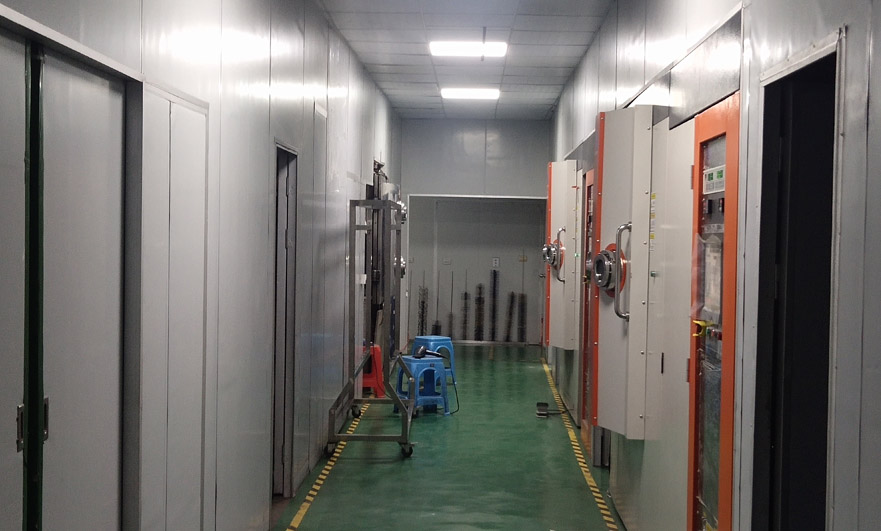
Why Choose Aluminum Electroplating? Can Plastics Be Electroplated?
Choosing aluminum electroplating offers several advantages, including improved aesthetics, corrosion resistance, and enhanced durability. However, it's essential to note that electroplating is typically performed on conductive materials like metals. Plastics, being non-conductive, cannot undergo traditional electroplating processes. Instead, alternative methods like electroless plating or metallization are used to achieve a metal coating on plastic surfaces.
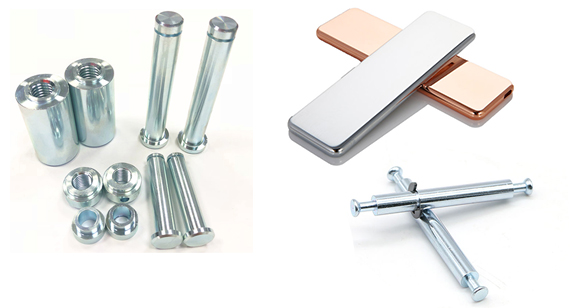
Electroplating Aluminum Advantages
Electroplating aluminum offers a wide range of advantages, making it a preferred surface treatment method in various industries. Here are the key benefits of electroplating aluminum:
Enhanced Aesthetics:
Electroplating can transform the appearance of aluminum, giving it a mirror-like shine or other decorative finishes. This is particularly valuable for industries where aesthetics matter, such as automotive, jewelry, and consumer electronics.
Improved Corrosion Resistance:
Electroplating creates a protective layer on the aluminum surface, significantly enhancing its resistance to corrosion, oxidation, and environmental factors. This is crucial for parts exposed to harsh conditions, like automotive components.
Increased Durability:
Aluminum electroplating improves the overall durability and wear resistance of aluminum parts, extending their lifespan. This is essential in applications where components endure heavy use and abrasion.
Lightweight:
Aluminum itself is a lightweight material, and electroplating doesn't add significant weight, making it suitable for applications where weight matters.
Customization of Surface Properties:
Electroplating allows for customization of surface properties based on the choice of plating material. Different metals provide specific properties, such as enhanced conductivity, hardness, or chemical resistance, depending on the application.
Precise Thickness Control:
Electroplating offers precise control over the thickness of the plated layer, ensuring consistency and uniformity across the entire surface of the aluminum part.
Electrical Conductivity:
Certain electroplating metals, such as gold and silver, are excellent conductors of electricity. This makes electroplated aluminum suitable for electrical connectors and components in the electronics industry.
Versatility:
Electroplating can be applied to a wide variety of aluminum parts, from small jewelry items to large automotive components. It adapts to different shapes and sizes, making it versatile for diverse applications.
Surface Finishing and Smoothing:
Electroplating can be used to improve the surface finish and smoothness of aluminum parts, eliminating imperfections and creating a flawless surface.
Decorative Finishes:
Electroplating offers the flexibility to achieve decorative finishes in various colors and textures, catering to both functional and aesthetic requirements.
Increased Value:
Electroplating can add value to aluminum parts by enhancing their appearance and properties, making them more attractive to consumers and more valuable in the market.
Environmentally Friendly Options:
Some electroplating processes offer environmentally friendly alternatives that reduce the use of hazardous chemicals and minimize the environmental impact.
Compatibility:
Electroplated aluminum can be easily integrated into existing manufacturing processes and applications, making it a convenient choice for many industries.
In summary, electroplating aluminum is a versatile and effective surface treatment method that offers a multitude of advantages, ranging from aesthetics and corrosion resistance to durability and customization of surface properties. These advantages make it an invaluable technique in numerous industrial applications.
Plastic Electroplating Challenges
Plastics are non-conductive materials, meaning they don't allow the flow of electricity required for traditional electroplating processes. As a result, plating metals onto plastic surfaces poses unique challenges. However, alternative methods have been developed to enable metal coatings on plastic objects:
Electroless Plating:
This process uses a chemical reaction rather than electricity to deposit a metal layer onto the plastic surface. It's an effective way to achieve metal coatings on plastics.
Metallization:
Metallization involves applying a conductive layer to the plastic surface before electroplating. This conductive layer allows subsequent electroplating processes.
Vacuum Metalizing:
In this method, a thin layer of metal is deposited onto the plastic surface in a vacuum chamber. It's commonly used for creating reflective surfaces on plastic objects.
These alternative methods have enabled the electroplating of plastics, expanding the range of materials that can benefit from the advantages of metal coatings. However, the choice of method depends on the specific plastic material, the intended application, and the desired metal coating.
In summary, aluminum electroplating offers numerous benefits, but it's typically applied to conductive materials like metals. Plastics can be electroplated using alternative methods such as electroless plating, metallization, or vacuum metalizing, depending on the requirements of the project.
Electroplating Surface Treatment Metals Suitable
Electroplating is a versatile surface treatment method that can be applied to various metals, enhancing their appearance, corrosion resistance, and functionality. Here are some common metals that can undergo electroplating surface treatment:
Copper: Copper electroplating is widely used for its excellent electrical conductivity. It's applied to electrical components and connectors.
Nickel: Nickel electroplating provides corrosion resistance and is often used as an intermediate layer for subsequent plating with other metals like chrome.
Chrome: Chrome electroplating creates a shiny, corrosion-resistant finish. It's commonly used in the automotive industry for trim and decorative parts.
Gold: Gold electroplating is valued for its corrosion resistance and aesthetic appeal. It's used in jewelry, electronics, and high-end decorative items.
Silver: Silver electroplating offers excellent electrical conductivity and is used in electronics and the production of silverware.
Zinc: Zinc electroplating provides corrosion protection for iron and steel components. It's often used for fasteners, brackets, and automotive parts.
Tin: Tin electroplating is employed for its corrosion resistance and solderability. It's used in the electronics industry for components like PCBs.
Lead: Lead electroplating is rarely used today due to environmental concerns associated with lead exposure. It was previously used for certain applications.
Platinum: Platinum electroplating is used in specialized applications, such as the medical and aerospace industries, where its unique properties are required.
Rhodium: Rhodium electroplating is used for its exceptional hardness and corrosion resistance. It's often applied to jewelry, especially white gold pieces.
Palladium: Palladium electroplating is used in electronics and the automotive industry for its excellent corrosion resistance and electrical conductivity.
Cadmium: Cadmium electroplating, while effective for corrosion protection, has been restricted due to environmental and health concerns. It's been largely replaced by zinc and other alternatives.
Bronze and Brass Alloys: Bronze and brass alloys can be electroplated to improve their appearance and corrosion resistance. They are used in decorative and functional applications.
Aluminum: Aluminum electroplating is less common due to challenges related to hydrogen embrittlement. However, it can be achieved using specialized processes.
Titanium: Titanium electroplating is used in high-performance applications, including aerospace, where its corrosion resistance and lightweight properties are valuable.
Stainless Steel: Stainless steel is typically not electroplated because it already possesses corrosion resistance. However, certain specialized processes may involve plating on stainless steel.
These are some of the metals commonly subjected to electroplating surface treatment. The choice of metal and plating process depends on the specific requirements of the application, including aesthetics, corrosion resistance, electrical conductivity, and environmental considerations.
The Surface Effects Achieved by Electroplating Aluminum Parts
Electroplating aluminum parts can result in a variety of surface effects, depending on factors such as the plating material, the electroplating process used, and the desired outcome. Here are some common surface effects achieved through aluminum electroplating:
Mirror-Like Shine:
When aluminum parts are electroplated with materials like chrome or nickel, they can acquire a highly reflective, mirror-like surface. This effect is often desired for automotive trim, motorcycle parts, and decorative fixtures.
Enhanced Corrosion Resistance:
One of the primary reasons for electroplating aluminum is to improve its corrosion resistance. A thin layer of metals like nickel or zinc is applied to create a protective barrier against environmental elements, enhancing the longevity of the part.
Decorative Finishes:
Electroplating allows for a range of decorative finishes. For instance, gold or silver electroplating can add an elegant and luxurious appearance to jewelry or decorative items.
Textured or Satin Finishes:
Electroplating can create textured or satin finishes on aluminum surfaces by adjusting the plating process. This can provide a more subdued and tactile appearance, often used in interior design elements.
Increased Durability:
Electroplating can significantly increase the durability and wear resistance of aluminum parts, making them suitable for applications where abrasion or wear is a concern.
Electrical Conductivity:
Some electroplated finishes are chosen for their electrical conductivity. For instance, a thin layer of gold or silver can improve the electrical performance of connectors in the electronics industry.
Color Customization:
Electroplating can be used to impart specific colors to aluminum parts. For example, colored chrome plating is employed to achieve various shades, from blue to black, for aesthetic and functional purposes.
Improved Solderability:
In electronics, electroplating aluminum can improve the solderability of components, ensuring reliable electrical connections.
Antique or Vintage Appearance:
Specialized electroplating techniques can be used to create an antique or vintage appearance on aluminum surfaces, giving them a weathered or aged look for specific design preferences.
Consistent and Uniform Finish:
Electroplating ensures a consistent and uniform finish across the entire surface of aluminum parts, eliminating inconsistencies that may occur with other surface treatment methods.
The choice of surface effect achieved through aluminum electroplating is highly customizable, depending on the desired aesthetics, functional requirements, and industry-specific needs. The versatility of electroplating makes it a valuable process for enhancing aluminum parts for a wide range of applications.
Comparing Surface Treatments: Electroplating vs. Alternative Methods
Surface treatments are essential for enhancing the appearance and functionality of various materials, including metals like aluminum. Electroplating is a common method, but there are alternative processes that can achieve similar surface effects. Let's compare electroplating with some alternative methods in terms of their effects and cost considerations:
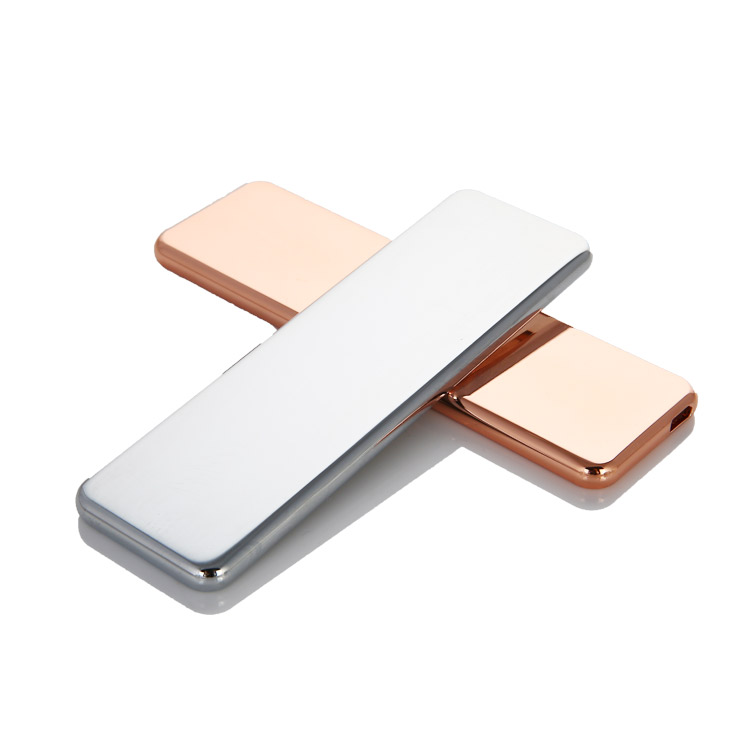
1. Electroplating:
Surface Effects: Electroplating can achieve effects like mirror-like shine, corrosion resistance, decorative finishes, and improved durability. The specific effect depends on the plating material and process.
Cost Considerations: Electroplating costs can vary significantly based on factors like the plating material, the size of the part, and the complexity of the process. Precious metals like gold or silver plating tend to be more expensive than common metals like nickel or chrome.
2. Electroless Plating:
Surface Effects: Electroless plating can achieve effects similar to electroplating, including corrosion resistance and decorative finishes, especially on non-conductive materials like plastics.
Cost Considerations: Electroless plating can be cost-competitive with electroplating, especially for certain applications. However, the cost can still vary depending on factors like the plating material and the complexity of the process.
3. Vacuum Metallizing:
Surface Effects: Vacuum metallizing can create reflective, metallic finishes on non-conductive materials like plastics and glass. It's commonly used for decorative or aesthetic purposes.
Cost Considerations: Vacuum metallizing can be cost-effective for certain applications, particularly when compared to traditional electroplating with precious metals. The cost depends on the material being coated and the complexity of the process.
Surface Effects: Painting and coating can achieve various surface effects, including color customization, texture, and corrosion resistance. While not the same as electroplating, they serve similar purposes.
Cost Considerations: Painting and coating can be cost-effective, particularly for achieving specific color or texture requirements. The cost depends on the type of coating material and the complexity of the process.
5. Anodizing:
Surface Effects: Anodizing is commonly used on aluminum to enhance corrosion resistance and create decorative finishes. It can achieve effects similar to electroplating, such as color customization and improved durability.
Cost Considerations: Anodizing is often cost-competitive with electroplating, especially for aluminum parts. The cost depends on factors like the type of anodizing (e.g., Type I, Type II, Type III) and the size of the part.
In summary, the choice between electroplating and alternative surface treatment methods depends on several factors, including the desired surface effects, material being treated, cost considerations, and specific industry requirements. While electroplating offers a wide range of effects and can be competitive in terms of cost, alternative methods like electroless plating, vacuum metallizing, painting, coating, and anodizing provide viable options for achieving similar results, particularly for non-conductive materials and specific applications. The choice should be based on the unique needs of the project and the desired outcome.
The Electroplating Process for Aluminum: Step-by-Step
Electroplating aluminum involves a carefully controlled process to achieve desired surface effects and properties. Here is a step-by-step guide to the electroplating process for aluminum:
1. Cleaning:
The initial step is thorough cleaning. The aluminum part is cleaned to remove any contaminants, dirt, grease, or oxidation from the surface. This is crucial for proper adhesion of the plating material.
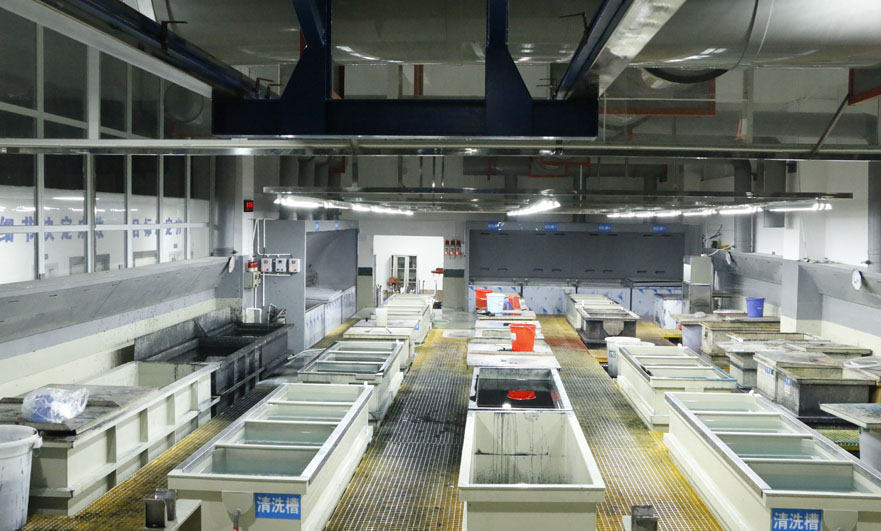
2. Surface Preparation:
After cleaning, the aluminum part may undergo surface preparation, which can include etching or applying a specialized coating to improve adhesion. This step ensures that the surface is ready for plating.
3. Electrolyte Solution:
The cleaned and prepared aluminum part is immersed in an electrolyte solution. This solution typically contains metal ions of the plating material (e.g., nickel, chrome) and various chemicals to facilitate the electroplating process.
4. Electrolysis:
The aluminum part is connected to the positive terminal (anode) of a power source, while a metal electrode (cathode) is connected to the negative terminal. Both the aluminum part and the metal electrode are immersed in the electrolyte solution.
When an electrical current is applied, metal ions from the electrode are dissolved in the solution and deposited onto the surface of the aluminum part.
This deposition forms a thin layer of the plating material on the aluminum, gradually building up the desired thickness.
5. Control and Monitoring:
Throughout the electroplating process, various parameters are carefully controlled and monitored. These include current density, temperature, bath chemistry, and plating time. Precise control ensures consistent and uniform plating.
6. Finishing:
After achieving the desired thickness of the plating layer, the aluminum part is removed from the electrolyte solution.
It is then rinsed to remove any excess solution and chemicals.
Depending on the specific requirements, the part may undergo additional finishing steps such as polishing, buffing, or surface treatments to achieve the desired appearance and smoothness.
7. Quality Inspection:
The electroplated aluminum part undergoes quality inspection to ensure that the plating is uniform, adheres well, and meets the desired specifications. This can involve visual inspection, thickness measurements, and adhesion tests.
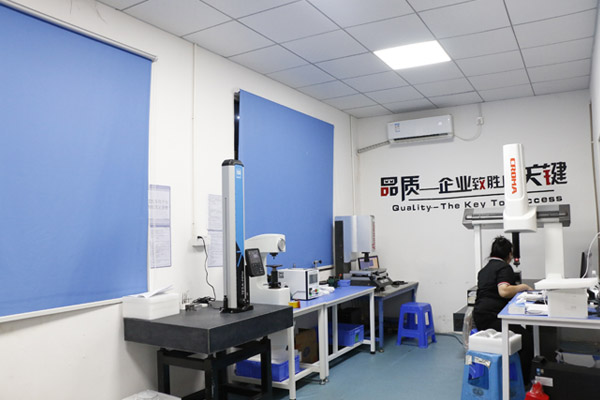
8. Final Application:
Once the electroplating process is successfully completed and inspected, the electroplated aluminum part is ready for its intended application. It can be integrated into various industries and products, such as automotive components, jewelry, electronics, and more.
The specific electroplating process may vary depending on factors like the choice of plating material, the desired surface effect, and the industry requirements. However, these fundamental steps outline the core process of electroplating aluminum, emphasizing precision and control to achieve the desired results.
Common Issues and Considerations for Electroplating Aluminum Parts
Electroplating aluminum parts can yield exceptional results, but it also comes with its share of challenges and considerations. Here are some common issues and important points to keep in mind when electroplating aluminum:
1. Surface Preparation:
Proper surface preparation is crucial. Any contaminants or oxidation on the aluminum's surface can hinder adhesion and lead to plating defects. Thorough cleaning and surface treatment are essential.
2. Adhesion Issues:
Ensuring strong adhesion between the aluminum substrate and the plating material is a key challenge. Proper surface preparation and the use of specialized coatings can help address this issue.
3. Hydrogen Embrittlement:
Aluminum is susceptible to hydrogen embrittlement during the electroplating process. This can lead to reduced mechanical properties and part failure. Post-plating baking or stress relief processes may be necessary to mitigate this issue.
4. Anodizing:
Anodizing, a process that creates a protective oxide layer on aluminum, is sometimes used as a pretreatment step before electroplating. It helps improve adhesion and corrosion resistance.
5. Material Compatibility:
Compatibility between the aluminum substrate and the chosen plating material is critical. Some metals may not adhere well to aluminum, requiring the use of intermediary layers like copper or nickel.
6. Thickness Control:
Achieving precise control over plating thickness is essential to ensure uniformity and meet specifications. This often requires careful monitoring and adjustments during the plating process.
7. Porosity:
Aluminum can be porous, which can lead to issues with plating uniformity and corrosion resistance. Proper sealing of the aluminum substrate or using specialized processes can help address this issue.
8. Type of Electrolyte Solution:
The choice of electrolyte solution is critical, as it affects the plating process and the quality of the final finish. The solution's composition, temperature, and pH must be carefully controlled.
9. Corrosion Resistance:
While electroplating improves corrosion resistance, it's important to select the right plating material and thickness to suit the intended application's environmental conditions.
10. Surface Finish and Texture:
The desired surface finish and texture play a role in the plating process. Different plating materials and processes can achieve glossy, satin, or textured finishes.
11. Cost Considerations:
The cost of electroplating aluminum can vary based on factors such as the plating material, process complexity, and part size. It's important to consider budget constraints when selecting plating options.
12. Environmental Impact:
Electroplating processes may involve the use of chemicals and generate waste. It's important to adhere to environmental regulations and consider eco-friendly alternatives.
13. Post-Plating Treatments:
Depending on the application, post-plating treatments such as passivation, chromate conversion coating, or additional protective layers may be required to enhance the aluminum part's properties.
14. Quality Control:
Rigorous quality control and inspection processes should be in place to ensure that electroplated aluminum parts meet the desired specifications for thickness, adhesion, appearance, and performance.
In summary, electroplating aluminum parts can produce excellent results when executed correctly. However, addressing issues related to adhesion, hydrogen embrittlement, material compatibility, and surface preparation is crucial. Careful consideration of plating thickness, environmental impact, and post-plating treatments is essential to achieve the desired quality and functionality of electroplated aluminum components.
Aluminum Electroplating Applications
Aluminum electroplating finds widespread use across various industries due to its ability to enhance the appearance, durability, and functionality of aluminum parts. Here are common applications of aluminum electroplating:
Chrome-plated aluminum components, such as bumpers, wheels, grilles, and trim, are common in the automotive industry. Electroplating provides corrosion resistance and decorative finishes.
2. Electronics and Electrical Industry:
Aluminum parts in electronics, such as connectors, housings, and heat sinks, benefit from electroplating to improve electrical conductivity, solderability, and corrosion resistance.
3. Aerospace Industry:
Aluminum parts used in aircraft interiors and exteriors undergo electroplating for corrosion resistance and to meet stringent aesthetic and functional requirements.
4. Jewelry and Fashion Accessories:
Electroplating with precious metals like gold or silver is common for jewelry items, offering improved aesthetics and value.
5. Plumbing and Fixtures:
Faucets, showerheads, and various bathroom fixtures are electroplated to enhance their appearance and corrosion resistance.
6. Decorative Items:
Aluminum decorative home items, sculptures, and ornaments benefit from electroplating to create visually appealing and durable finishes.
7. Consumer Electronics:
Smartphone cases, laptop housings, and other aluminum components are electroplated to improve aesthetics and durability.
8. Medical Devices:
Aluminum medical devices, including surgical instruments and implants, undergo electroplating to ensure biocompatibility, corrosion resistance, and smooth surfaces.
Machine components, gears, and parts made of aluminum are electroplated to enhance wear resistance and corrosion protection.
10. Firearms and Weaponry:
Aluminum firearm components, gun barrels, and accessories are electroplated to improve durability and corrosion resistance.
11. Aerospace:
Aluminum parts used in aircraft, satellites, and space exploration benefit from electroplating to achieve corrosion resistance, electrical conductivity, and precision finishes.
12. Art and Sculptures:
Artists use aluminum electroplating to create unique surface textures and finishes on sculptures, adding an artistic touch to their work.
These applications demonstrate the versatility of aluminum electroplating in various industries, where it is used to improve aesthetics, increase durability, and enhance corrosion resistance, among other benefits. The adaptability of electroplating makes it a valuable technique for transforming aluminum parts to meet specific industry and consumer needs.
Common Questions from About Aluminum Electroplating
When offering aluminum electroplating services to customers, it's essential to be prepared to address their inquiries and concerns. Here are some common questions customers may ask about aluminum electroplating:
What is Aluminum Electroplating?
Customers often start with the basics. Explain that aluminum electroplating is a surface treatment process in which a layer of metal is deposited onto an aluminum substrate to enhance its properties.
What Are the Benefits of Aluminum Electroplating?
Customers may want to know why they should choose electroplating for their aluminum parts. Highlight benefits such as improved aesthetics, corrosion resistance, durability, and enhanced conductivity.
Which Metals Can Be Used for Electroplating Aluminum?
Explain that various metals like chrome, nickel, gold, silver, and more can be used for electroplating aluminum. The choice depends on the desired properties and appearance.
Is Aluminum Electroplating Environmentally Friendly?
Customers may inquire about the environmental impact. Discuss eco-friendly options and adherence to environmental regulations within your electroplating processes.
How Does Aluminum Electroplating Compare to Other Surface Treatments?
Customers might want to know how electroplating stacks up against alternatives like anodizing or painting. Highlight the unique advantages of electroplating for their specific needs.
Can You Electroplate Different Types of Aluminum Alloys?
Explain that while aluminum electroplating is possible on various aluminum alloys, the specific alloy and its surface condition can influence the plating process.
What Thickness Can You Achieve with Aluminum Electroplating?
Discuss the ability to control plating thickness to meet their specifications. Emphasize the importance of uniform thickness.
How Do You Ensure Good Adhesion between the Plating and Aluminum?
Detail the surface preparation techniques used to ensure strong adhesion between the plating material and the aluminum substrate.
Can You Achieve Specific Finishes or Textures with Aluminum Electroplating?
Explain that electroplating can achieve a range of finishes, from mirror-like to textured, depending on the process and materials used.
What Quality Control Measures Do You Have in Place?
Assure customers of rigorous quality control practices, including inspection, testing, and adherence to industry standards to meet their quality requirements.
How Does Pricing Work for Aluminum Electroplating?
Discuss the factors that influence pricing, such as part size, plating material, and complexity. Provide transparency in your pricing structure.
What Is the Turnaround Time for Aluminum Electroplating?
Provide an estimate of the time required for the electroplating process, considering factors like part size, plating thickness, and workload.
Do You Offer Masking or Selective Plating Services?
Confirm whether your facility provides masking or selective plating options for customers who need specific areas of their parts protected.
Can You Handle Large or Custom Orders?
Assure customers of your capacity to handle both large-scale production and custom orders to meet their unique requirements.
What Industry Standards Do You Adhere To?
Mention any industry certifications or standards your facility adheres to, emphasizing quality and compliance.
Being well-prepared to answer these common customer questions helps build trust and confidence in your aluminum electroplating services and ensures a positive customer experience.
